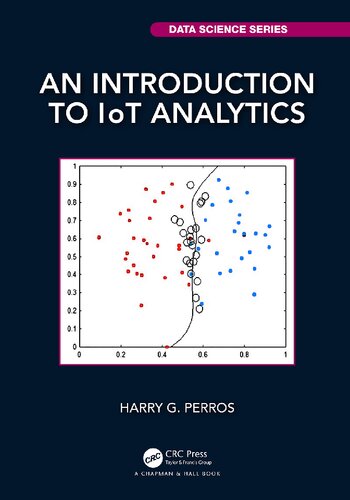

Most ebook files are in PDF format, so you can easily read them using various software such as Foxit Reader or directly on the Google Chrome browser.
Some ebook files are released by publishers in other formats such as .awz, .mobi, .epub, .fb2, etc. You may need to install specific software to read these formats on mobile/PC, such as Calibre.
Please read the tutorial at this link: https://ebookbell.com/faq
We offer FREE conversion to the popular formats you request; however, this may take some time. Therefore, right after payment, please email us, and we will try to provide the service as quickly as possible.
For some exceptional file formats or broken links (if any), please refrain from opening any disputes. Instead, email us first, and we will try to assist within a maximum of 6 hours.
EbookBell Team

0.0
0 reviewsThis book covers techniques that can be used to analyze data from IoT
sensors and addresses questions regarding the performance of an IoT system. It
strikes a balance between practice and theory so one can learn how to apply
these tools in practice with a good understanding of their inner workings. This
is an introductory book for readers who have no familiarity with these
techniques.
The techniques presented in An Introduction to IoT Analytics come from
the areas of machine learning, statistics, and operations research. Machine
learning techniques are described that can be used to analyze IoT data
generated from sensors for clustering, classification, and regression. The statistical
techniques described can be used to carry out regression and forecasting of IoT
sensor data and dimensionality reduction of data sets. Operations research is
concerned with the performance of an IoT system by constructing a model of the
system under study and then carrying out a what-if analysis. The book also
describes simulation techniques.
Key Features:
·
IoT analytics is not just machine
learning but also involves other tools, such as forecasting and simulation
techniques.
·
Many diagrams and examples are given
throughout the book to fully explain the material presented.
·
Each chapter concludes with a project
designed to help readers better understand the techniques described.
·
The material in this book has been
class tested over several semesters.
·
Practice exercises are included with
solutions provided online at www.routledge.com/9780367686314
Harry G. Perros is a Professor of Computer Science at North Carolina
State University, an Alumni Distinguished Graduate Professor, and an IEEE
Fellow. He has published extensively in the area of performance modeling of
computer and communication systems.